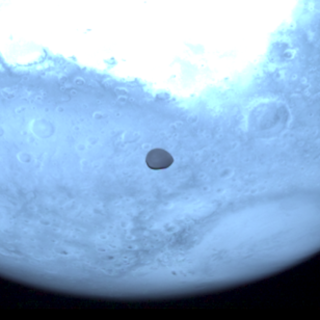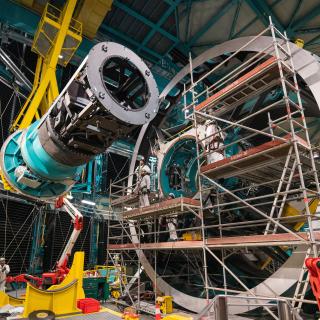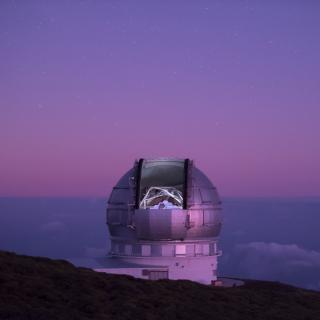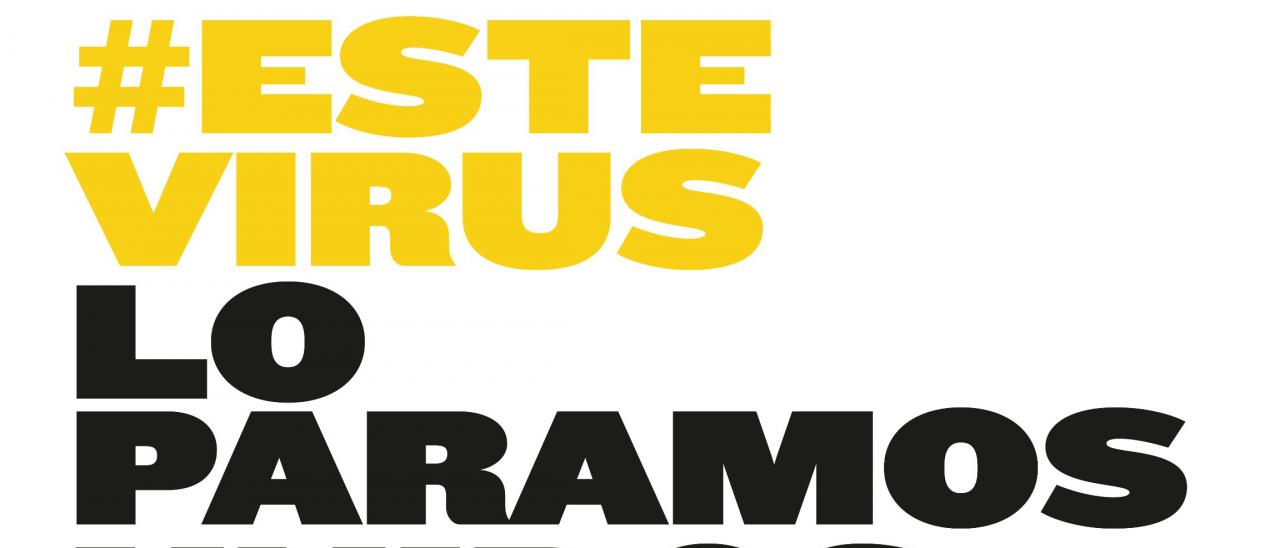It may interest you
-
 ESA’s Hera mission for planetary defense performed a flyby of Mars, as part of its gravitational assistance manoeuvre to shorten its journey to the binary asteroid system Didymos. During the flyby, the spacecraft came around 5000 km from the surface of Mars, having also the opportunity to obtain images of its two moons, Deimos (during the approach) and Phobos (when departing Mars). Julia de León, Javier Licandro, and George Prodan, researchers at the Instituto de Astrofísica de Canarias, participate in this mission, successfully launched from Cape Cañaveral, Florida (USA) on October 7, 2024Advertised on
ESA’s Hera mission for planetary defense performed a flyby of Mars, as part of its gravitational assistance manoeuvre to shorten its journey to the binary asteroid system Didymos. During the flyby, the spacecraft came around 5000 km from the surface of Mars, having also the opportunity to obtain images of its two moons, Deimos (during the approach) and Phobos (when departing Mars). Julia de León, Javier Licandro, and George Prodan, researchers at the Instituto de Astrofísica de Canarias, participate in this mission, successfully launched from Cape Cañaveral, Florida (USA) on October 7, 2024Advertised on -
 During the week from 16th to 20th September the International Conference LSST@Europe 6 will be held in La Palma a meeting which will bring together some 140 researchers in astrophysics from more than 20 countries. At the meeting the latest advances in the LSST project, a front-lione initiative in the exploration of the Universe which will be carried out at the Vera Rubin Observatory in Chile and which has close collaboration from the Instituto de Astrofísica de Canarias (IAC). The project consists in carrying out a new and detailed census of the sky, called the Legacy Survey of Space andAdvertised on
During the week from 16th to 20th September the International Conference LSST@Europe 6 will be held in La Palma a meeting which will bring together some 140 researchers in astrophysics from more than 20 countries. At the meeting the latest advances in the LSST project, a front-lione initiative in the exploration of the Universe which will be carried out at the Vera Rubin Observatory in Chile and which has close collaboration from the Instituto de Astrofísica de Canarias (IAC). The project consists in carrying out a new and detailed census of the sky, called the Legacy Survey of Space andAdvertised on -
 The Solar System research group at the Instituto de Astrofísica de Canarias (IAC) is participating in the international programme to keep a closet track of asteroid 2024 YR4. The aim is to determine its orbit with the highest possible precision before it stops being observable by ground based and satellite telescopes in April, and so improving our value of the probability that it will impact the Earth in 2032. In this context several telescopes of the Canary Observatories of the IAC are playing an outstanding role in this observing campaign: The Gran Telescopio Canarias (GTC) at the Roque deAdvertised on
The Solar System research group at the Instituto de Astrofísica de Canarias (IAC) is participating in the international programme to keep a closet track of asteroid 2024 YR4. The aim is to determine its orbit with the highest possible precision before it stops being observable by ground based and satellite telescopes in April, and so improving our value of the probability that it will impact the Earth in 2032. In this context several telescopes of the Canary Observatories of the IAC are playing an outstanding role in this observing campaign: The Gran Telescopio Canarias (GTC) at the Roque deAdvertised on
